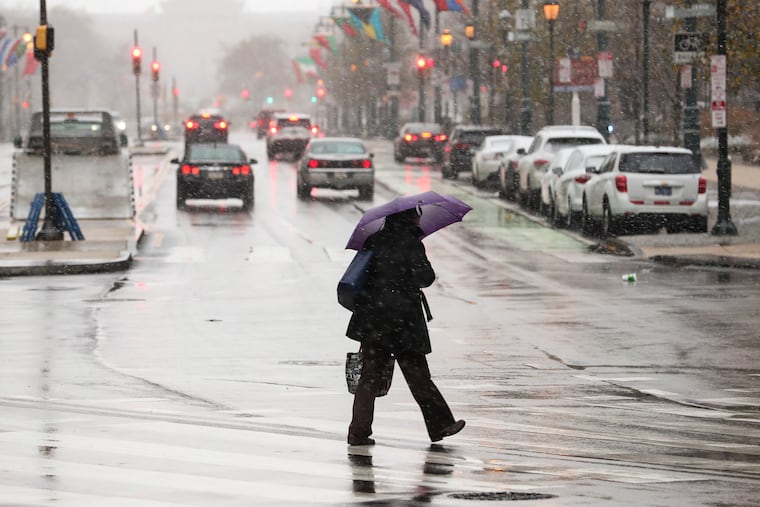3 winter safety tips for preventing slips and falls
Follow these tips to avoid trips and falls in wintry weather.

Is your body safe from snowy conditions? While the season has yet to unleash severe winter weather, the calm before the storm is always the best time to put a protection plan in place. Safeguarding yourself from the dangers of slippery snow and ice can be a real lifesaver, as winter ranks as one of the worst seasons for sustaining an injury from its multiple safety hazards.
When weighing winter-related risks, chances are you think of spraining an ankle on the slopes or a road accident. But even more common of a seasonal threat are slips and falls, which can result in debilitating injuries such as broken bones or a head trauma. This is particularly concerning for older adults with impaired balance, as well as others with compromised balance, such as pregnant women.
Fortunately, there are some simple steps to reduce your risk of experiencing these wintertime woes.
Dressed to chill
Proper footwear can make all the difference in protecting you from falls. Although sneakers are appropriate for most physical activities, they don’t provide enough traction and stability to prevent falls on a slick surface. The same goes for dress shoes. If part of your morning routine is walking down your driveway to grab the newspaper in your work shoes, or you fetch the mail after work, these smooth-bottomed shoes will give no support against black ice, and even increase the likelihood of slips and falls.
Non-slip rubber shoes and boots with deep treads are a better choice. These can be found at most discount shoe stores such as DSW or Amazon. Traction cleats can also be added to most shoes.
Protect your walking path
Sprinkling salt, sand, or kitty litter on slick surfaces can help reduce falls by absorbing moisture. If you’re walking home from work, or the front path to your home has layers of snow and ice, carry a small bag with you and disperse a dusting of it in front of your route.
Having proper walking form is essential for avoiding injuries, as well.
Walk with a slight forward bend, rather than straight up. Take short steps, move slowly, and shuffle your feet. Think of how a penguin would walk.
Remain flat-footed, maintaining your center of gravity over your feet.
Avoid taking any walking path that hasn’t been cleared yet.
Boost your balance
Most of us won’t consider the consequences of falling until it happens. And while stability-improving exercises won’t entirely remove the risk of winter walking accidents, they will help reduce the chances of experiencing one. By bolstering your coordination and stabilizer muscles that keep your body balanced, you’re better equipped to catch yourself or rebound from what could be a catastrophic fall.
Try incorporating these two stability-supporting exercises into your weekly workout:
A leg to stand on. Though it may not seem like it, you spend a good part of your day balancing on one leg. Daily activities such as walking, running, and stair climbing require a powerful core, strong stabilizer muscles, and total body control. One of the best ways to strengthen this skill is by — you guessed it — standing on one leg.
Step 1: Stand near a wall for support. Keep your shoulders back and core muscles engaged.
Step 2: Slowly lift the right leg so the knee is bent at a 90-degree angle (or as high as you can comfortably lift it). Hold for 30 seconds. If at any point you feel as if you could fall, use the wall for balance or lower your leg back down. Repeat on the opposite side.
Single leg stand progression. Once you master the single leg stand, take it to the next level by incorporating movement. By doing so, your muscles must work harder to keep your body from falling.
Step 1: Resume position 2 from above.
Step 2: With your leg elevated, bend at the waist to touch your right hand to the outside of your right foot, then return the spine to a straight stance and lower your leg. Practice this sequence 10 times, then switch legs.
Ashley Blake Greenblatt is a certified personal trainer and wellness coach in South Jersey. Learn more about her virtual training program at ashleyblakefitness.com.